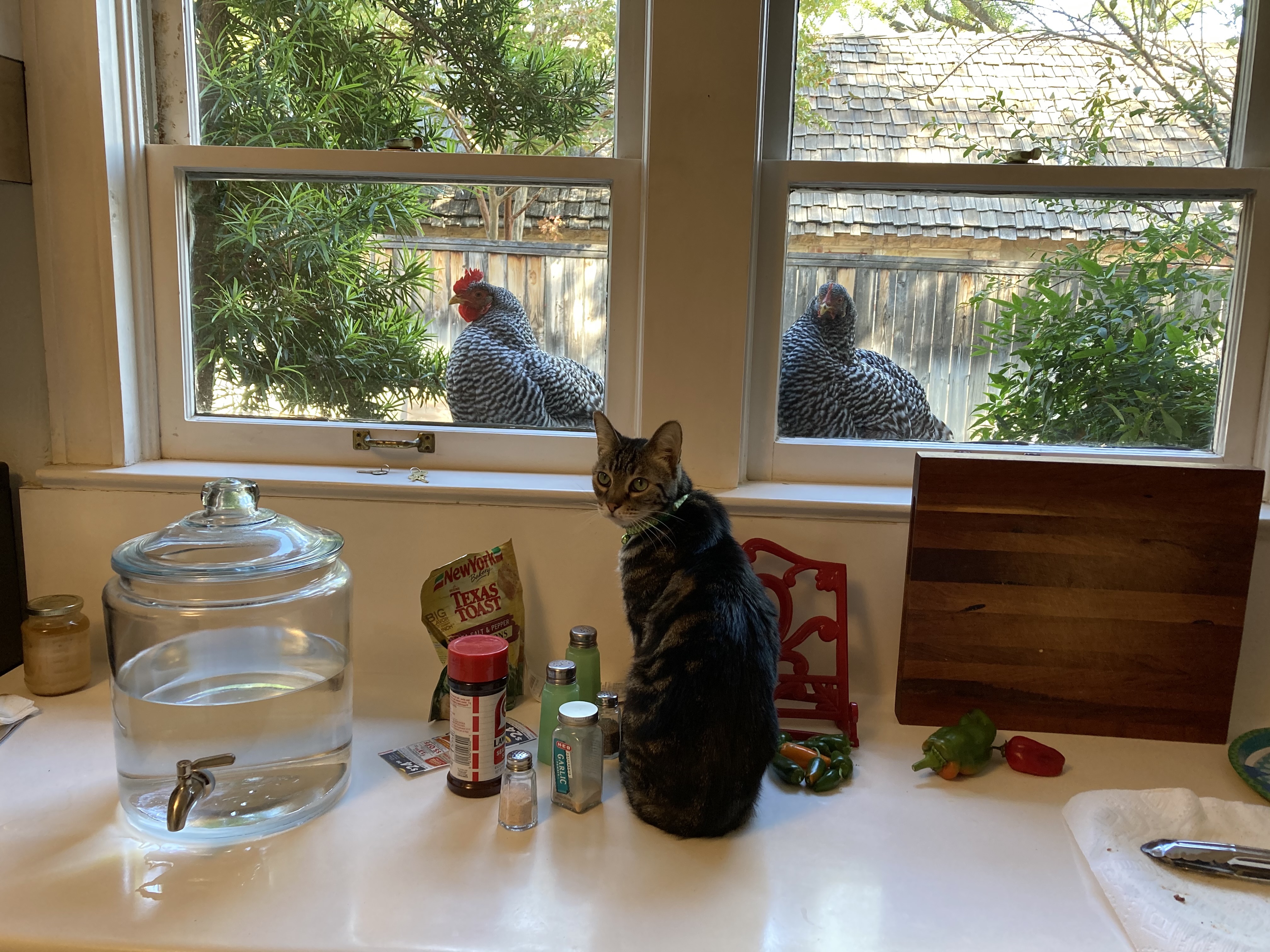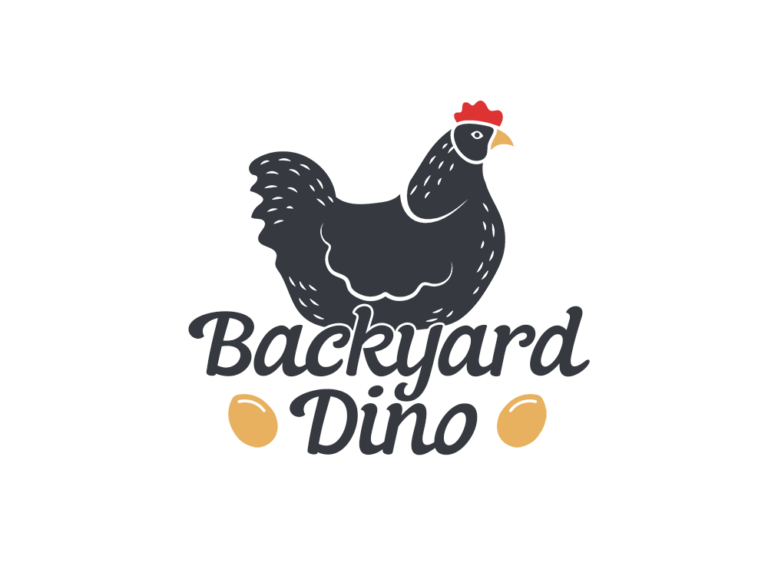What you feed your chickens will vary depending on their age. Chicks have different nutritional requirements than full-grown chickens that are laying eggs.
Chicks should be fed a starter feed until they are 4 to 5 months of age. After this point, chickens (hens) should be transitioned to a layer feed. Layer feed should never be fed to chicks as the additional mineral content in the feed can be harmful to a chicks development.
Read on to find out what you should be feeding your backyard chickens based on their age.
Types of Feed by Age
For people raising chickens in their backyard there are 2 types of feed:
- chick starter
- layer feed
Chick starter is a food specially formulated for baby chickens to eat. It comes as a crumble, which is small pieces of feed, and is higher in protein to support their rapid rate of growth.
Chick starter can come as medicated or un-medicated.
The medicated feed contains antibiotics, or coccidiostats, that prevents chicks from getting coccidiosis.
All chickens are exposed to cocci but baby chicks are more susceptible to developing coccidiosis which is a contagious disease and lead to death.
The main risk of chicks contracting coccidiosis is in an industrial farm environment where there is high stress from cramped living conditions, reduced access to fresh water and food, and a build-up of manure.
For chicks raised in a brooder at someone’s house, the risk developing coccidiosis is very small.
My opinion on medicated feed is that it’s not necessary for a backyard chicken keeper. The medicated feed is needed more for factory chickens given their living conditions and it is given to all chickens, whether they are sick or not. I prefer to have a more cautious approach to medication and do not medicate “just in case.” Who knows, the medicated feed might contribute to antibiotic resistant diseases in chickens if they are given by default to every single chicken and we know what the similar situation with antibiotics has done with humans.

Chick starter can be fed for the first 6 weeks and then transition to a pullet starter feed. For our chickens, we kept them on the non-medicated chick starter until they started laying eggs and they had no issues.
Once chickens are at 4 to 5 months of age, they can be transitioned to a layer feed. This type of feed is formulated for hens and has additional vitamins and minerals to aid in egg production. Layer feed should never be fed to chicks as the additional mineral content in the feed can be harmful to a chicks development.
Layer feed can come in the form of pellets or crumbles. Pellets have been compressed into a mini hot dog shape and are less messy. If pellets fall on the ground, a chicken can easily identify the pellet and it will be eaten. Pellets consistently have the same nutritional value per piece so chickens are able to quickly have their nutritional needs met and can then become bored. By comparison, chickens that free range will have to eat different plants and bugs throughout the yard in order to have those same nutritional needs met which can be an all day task.
Layer feed in the form of crumbles is the same content as pellets, but it has been crushed. A drawback of feeding crumbles is that they can end up on the floor. Since the pieces are so small, the chickens will either not eat them, leading to waste, or they will eat them off the floor where there is also manure which is not healthy for them to eat. However, since crumbles are small and it takes more bites of the crumbles to meet the nutritional needs of the chickens, they are more likely to take longer to eat. This helps decrease boredom in chickens which can lead to bad behavior such as bullying and pecking at each others flesh.
Types of Feeders by Age
Chickens can be messy eaters as they like to scoop food out of the feeder with their beaks. There are two types of feeders that help reduce waste: trough feeder and tube feeder.
A trough feeder is a small trough that will tip over if a chicken stands on the edge. For these types of feeders, you should not fill above half way, otherwise the chickens will scoop out a large amount of the feed. A trough feeder is best for chicks since it does not hold much food. Chicks will not be eating as much food as full-grown chickens so you will not need to add as much food to the feeder everyday.
A disadvantage of a trough feeder is that, unless the feeder is completely empty, when you add fresh feed it will be poured on top of older feed. Some chickens will not eat food that has become stale so you might have more feed waste with this type of feeder.
Another problem with trough feeders is that chickens will stand on the feeder and poop in the feed or kick bedding into the feeder. Since trough feeders usually sit on the ground, it’s more difficult to keep them clean. A solution for this is to set the feeder on something solid that is slightly above the ground (like a small landscaping paver); however, this might make it more difficult for chicks to reach the feed to eat.
A better option, in my opinion, is the tube feeder. A tube feeder can be set on the floor when feeding chicks so that they can reach the food. As the chickens get older and bigger, it’s best if the tube feeder can then be hung from a string or rope. This will prevent the chickens from scooping the feed onto the floor, kicking bedding into the feeder, or standing on top of the feeder and pooping inside.
Tube feeders have the fresh food poured in the top and the oldest food at the bottom where the chickens will eat around the base. This will prevent feed waste since the food is cycled through the feeder in the order that it’s added, meaning that no feed should get too stale before the chickens eat it.
I have reviewed the feeders I use for my chickens in Recommendations, along with all the other supplies I use for my backyard flock.
We have one chicken who, even as a baby at just a few days old, would roost on top of the feeder and eat out of the top. Inevitably, chicken poop would end up in the food. We now hang the tube feeder from a string in the chicken run.

Another lesson we learned, is that if the feeder is inside the chicken coop, the chickens will spend a significant amount of time inside the chicken coop. Chickens will eat all day (see When to Feed Your Backyard Chickens) and to encourage them to spend time outside the coop, provide their food (and water) outside the coop. This is especially important in hot weather. Just make sure the food doesn’t get wet from rain or a lawn sprinkler as that will cause it to mold, which is not healthy for your chickens.
So there you have it: the types of feed to give your chickens based on their age and some information on different types of feeders for each life stage of your chickens. Now if you can just figure out what to feed yourself for dinner tonight…



4 comments
[…] Depending on the age of your chickens, you will either feed them chick starter or layer feed. […]
[…] wrote an entire post dedicated to what to feed chickens by age. It has more details on chick starter and layer feed. In […]
[…] their nutritional needs met through a well balanced diet and plenty of water. Feed your chickens layer feed during the morning hours and late afternoon to make sure they are eating regularly, but not during […]
[…] In addition to providing enough feed, make sure you are feeding your chickens the right feed for their age. Check out this post for What to Feed Chickens by Age. […]
Comments are closed.